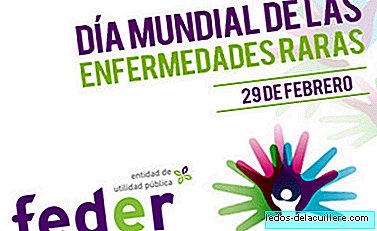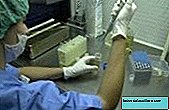
Today February 29 is celebrated the day of rare diseases, although not invisible. And seeing the day in which one is celebrated one might think that it is very significant that something so important for all those people who suffer from this type of illness is celebrated a day that only exists every four years.
Rare diseases affect millions of people in the world, it is estimated that three million Spaniards are affected by any of these diseases, and yet there are very few resources devoted to their research.

What is a rare disease?
Rare diseases are those that have a low incidence in the population. To be considered as rare, each specific disease can only affect a limited number of people. Specifically, when it affects less than 5 of every 10,000 inhabitants.
However, infrequent pathologies affect a large number of people, since according to the World Health Organization (WHO), there are about 7,000 rare diseases that affect 7% of the world's population. In total, it is estimated that in Spain there are more than 3 million people with rare diseases.
For this reason, anyone can suffer a rare pathology, at any stage of life. Here you can find a list of rare pathologies, some have jumped into the daily path to take to the movies or to be suffered by some famous, others do not have that luck.
What characterizes rare diseases?
Rare diseases are, for the most part, chronic and degenerative. In fact, 65% of these pathologies are serious and disabling and are characterized by:
- Early start in life (2 out of 3 appear before two years)
- Chronic pain (1 in 5 patients)
- The development of motor, sensory or intellectual deficit in half of the cases, which lead to a disability in autonomy (1 in 3 cases);
- In almost half of the cases the vital prognosis is at stake, since 35% of deaths can be attributed to rare diseases before one year, 10% between 1 and 5 years and 12% between 5 and 15 years

Diseases unknown to a large part of the medical community
The problem faced by a large part of the people affected by this type of disease is the difficulty in finding an adequate diagnosis of their disease. Many of the doctors are unaware of the existence of these diseases or do not know how to associate the symptoms with a specific disease. Therefore, many affected see their disease aggravated or at best, treated with little or no infallible treatments. This makes 42.68% of people with these pathologies do not have treatment or if available, it is not adequate.
Once they have been diagnosed, another of the problems they encounter begins, the decentralization of treatment and research centers which forces them to move to the cities where these centers are located. Too in case of the little ones We find little or no schools adapted to have a child with this type of illness. In many cases it is the parents themselves who are forced to train teachers and staff on the type of actions to be carried out with their child. Another workhorse is The discrimination that these children suffer in schools, something for which organizations like FEDER they are fighting.
All these barriers come from the lack of funding and coordination, since we cannot forget that these diseases are characterized by low prevalence, which implies a great geographical dispersion and, consequently, the need to join efforts to improve the quality of life of more than three million people in Spain.
FEDER It also promotes the creation of Reference Centers, Services and Units, whose mission is to coordinate all stakeholders: patients, public administration, scientists, health professionals, industry, among others, in the search for concrete solutions to improve the quality of care for those affected as well as the construction of a national network of associations throughout Spain, to improve the quality and life expectancy of the sick and their families.
Together we can make these diseases rare but those people who suffer from them are not invisible.












